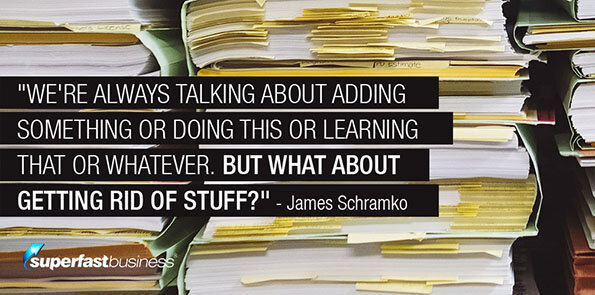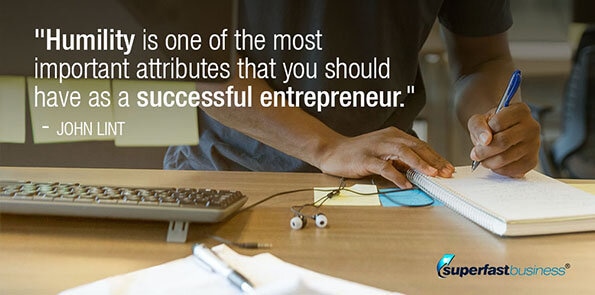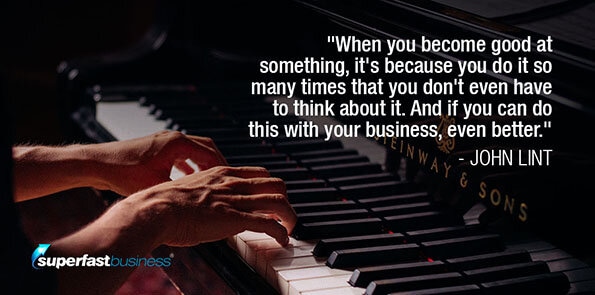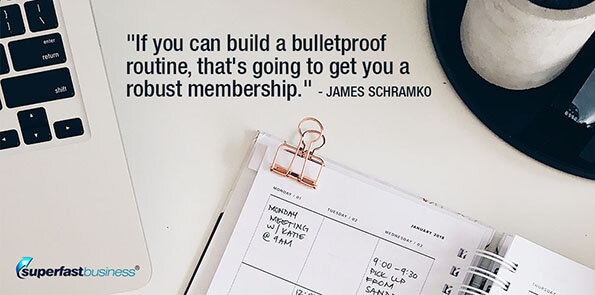James Schramko and John Lint are wrapping up their Membership Series with some final tips to get the most out of your membership website.
Discover what to do more of, why it pays to have a growth mindset, where professional help is useful, and more.
Podcast: Download (Duration: 31:53 — 29.3MB)
Get Notified Of Future Episodes Apple Podcasts | Spotify | Amazon Music | Android | Blubrry | Gaana | TuneIn | Deezer | Anghami | RSS | More
Podcast topics:
02:55 – Keep doing what’s effective. Are you putting your efforts where they’ll get results?
09:22 – Where do you go now? Humility and a growth mindset will take you far.
18:52 – How routine impacts your business. Doing the right things consistently builds a strong subscription model.
21:03 – This is where you call in the pros. Sometimes we all need help, paid help.
29:13 – Now you make it all work together. What’s better than one good idea?
Advance your paid membership business to new heights with James’s help
Everything starts and has to end. James and Membership Series began with the foundations of a membership website, the whys, then took listeners through the hows of development, setup, selling, traffic, and churn management. Their previous episode, on advanced strategies, was the wrap-up – almost. Turns out our hosts have more to give. So they’re devoting this episode to the things that will give you leverage in your membership business.
These are what James calls the 64:4, or the 80:20 of Pareto’s 80:20. Small hinges that swing big doors. But to get to them, you normally have to have the basics covered, for which James refers you to the preceding episodes of the Membership Series.
For this episode he and John want to avoid getting bogged down in techniques, so they’re covering just a few worth mentioning. And if some sound familiar, they’re important enough to bear repeating.
Keep doing what’s effective
The number one strategy for an advanced membership seeking leverage is to find what works. Do more of it.
James recalls when he used to run sales teams. He’d see sales managers spending their time on poor performers, trying to bring them up to scratch. If they’d just invested that same time in the stars of their team, he thought they’d have achieved much more.
We should do that with our product portfolios, he says. He himself is constantly refining his service offerings.
“The flip side of repeating what works is stopping what doesn’t work.”
The flip side of repeating what works is stopping what doesn’t work. Last year James explored a new market. He aligned with a good partner, pulled information, validated the market with a paying customer, and started delivering service. But for all their best efforts, the product didn’t return enough reward for the resources put in, and they had to stop it.
Given, the sunk cost fallacy makes it difficult. But if you keep doing the things you shouldn’t, you could be overlooking what is working, and what you should be doing more of.
If you have a working membership, says John, identify the traffic source that works the best, that you like the best, that you’re comfortable with, and focus on that. John, for instance, detests social media, so he puts his energy into the things he enjoys, like working with affiliates and partners, doing partners’ promotions and the like.
The reality, he says, is that most successful people do the basic. They train on the basics, they perfect the basics, they master the basics. And they just keep doing the things that work.
And if something works but you’re sick of it? Maybe get someone on your team to do it. Then you’ve freed up time to go do something else that works.
Where do you go now?
That leans perfectly, says James, into point number two, which is to develop a growth mindset. This is simply acknowledging that you don’t know everything. You’re not finished growing yet, but you lack the expertise to expand. Maybe someone else is doing something you can learn from. And this is where you need a bit of humility.
James references an idea from Dan Sullivan: a lot of us, when we start out, build all our scaffolding first, and then start building our building. But at some point, we forget to get off the scaffolding and get into the building.
So when you’ve done the basics and have a successful membership, now pretend you’re a beginner and level up. Get coaching, says James. Read, take courses, look into other industries, hire someone to research, pull apart your analytics, break your business and rebuild it.
James has plans to pull apart his business and build it strong, leaving in the bits that work. He learns all the time from books, and from the people around him, and he’s ready to take what he’s learned, toss the scaffolding, enter his building and not rely on where he came from.
 To emphasize the metaphor, he’s just cleared his garage of eight filing cabinets. We’re always talking, he says, about adding something or doing this or learning that or whatever. But what about getting rid of stuff? What about letting go of that?
To emphasize the metaphor, he’s just cleared his garage of eight filing cabinets. We’re always talking, he says, about adding something or doing this or learning that or whatever. But what about getting rid of stuff? What about letting go of that?
“We should have the confidence to let go, to make way.”
So looking for growth, says James, we should look inside. And we should have the confidence to let go, to make way.
 John agrees. Humility, he says, is one of the most important attributes that you should have as a successful entrepreneur. And being able to change your mind is extremely powerful. A lot of the most successful people in the world are able to change their mind and change course. It’s very important.
John agrees. Humility, he says, is one of the most important attributes that you should have as a successful entrepreneur. And being able to change your mind is extremely powerful. A lot of the most successful people in the world are able to change their mind and change course. It’s very important.
It’s the same with software development. 10XPRO started with a version one that made way for version two, three and so on. As it is now, it’s easy to use, with great features for both beginners and advanced users. But John and his team are always looking to improve. At time of recording, they’re about to release a new version with a cleaner look and feel to the interface.
How routine impacts your business
Next, says James, is dialing your routine. If you can build a bulletproof routine, that’s going to get you a robust membership. He would suggest that people who are still all over the place are never going to find that sweet spot of a cadence where they can really drive. Stop-start, open-close annual launches can be euphoric while they’re on, but the lows are low when they’re not, and can turn people off the membership model.
“Being consistent is really valued by your audience.”
He’s for maintaining a constant, month-to-month business that can run consistently for over a decade. And an audience values a routine and consistency which lets you predictably fulfill your end of a bargain.
 Having your routine is key to everything, says John. It’s how you can set things on autopilot. When you become good at something, it’s because you do it so many times that you don’t even have to think about it. And if you can do this with your business, even better.
Having your routine is key to everything, says John. It’s how you can set things on autopilot. When you become good at something, it’s because you do it so many times that you don’t even have to think about it. And if you can do this with your business, even better.
When both you and your team know what to do on a daily basis, things run smoothly. Income is predictable. And this gives you peace of mind.
This is where you call in the pros
The next topic is something James took a long time to warm up to, because it costs a little more upfront. And that is paying for professional sales copy.
You will hear of people in a new market who spend on copy and get no results. James had an established membership when he hired a copywriter, which reduced the risk, though it still cost five figures. Brian McCarthy did a great job, doing the research, speaking to James’s customers, looking at the data and writing up an offer.
James’s aim was to see if his sales copy, which he’d done himself since he started online, could be improved. He paid the money, and did get a return on investment. Sales increased, and the rewards of his gamble are ongoing. At some point, of course, it’ll need a tune-up (Brian, if you’re listening…).
Sales copy, James wants to remind people, isn’t just the sales page. Your pre-marketing, your social posts, your emails, and post-marketing pieces are also worth considering. If you’ve got something in motion, and you’ve never had a professional copywriter, that could be a good place to really get that extra bit of leverage.
You don’t need it out of the gate. And James doesn’t suggest you throw your money at a copywriter, unless you know someone who gets results, like James knows Will Wang. If you need a recommendation, he’ll be happy to help.
“You can’t fix something that no one wants to buy.”
And don’t expect a copywriter to polish a turd. You can’t fix something that no one wants to buy.
A copywriter won’t save your business if you don’t have a good product, agrees John. So you need to do the work before.
And yes, you can start without a professional. But we’re talking about growth. And we’re talking about being humble, so maybe acknowledge that your copy might not be that hot, and maybe a pro can do better.
Now you make it all work together
The last topic is a straightforward one. It’s stacking techniques on top of the others.
For example, James has a training on profitable membership courses. At the end of each module in that training is a checklist. If you go through and tick boxes and stack technique on top of technique, you get an exponential result, and you can’t help but improve your membership. It’s simply about collecting all good ideas and then implementing them.
Do something new that works and add on top of it and experiment, says John. Get results. And if you fail, try something else. If it works, keep doing it.
That concludes the discussion James and John have been having about memberships over many episodes. And John’s platform supports nearly everything they’ve talked about. It’s James’s intention that if anyone gets gets on board with 10XPRO, he’ll support them with John’s help. And if they do well with it, they can talk about it on the show as a case study.
Our hosts will need something cool to talk about in their next round of episodes, and they’re open to suggestions. If you’re listening and have ideas, drop a line.
And if you’d like to experience the all-in-one membership platform that is 10XPRO, head over to KLEQ.com.
Join other entrepreneurs getting fast results inside James Schramko membership
Liked the show? Leave us a review on iTunes










Good focus here. So true that when something flows and you’re comfortable with it, ‘it’s meant to be.’
Thanks Emily!